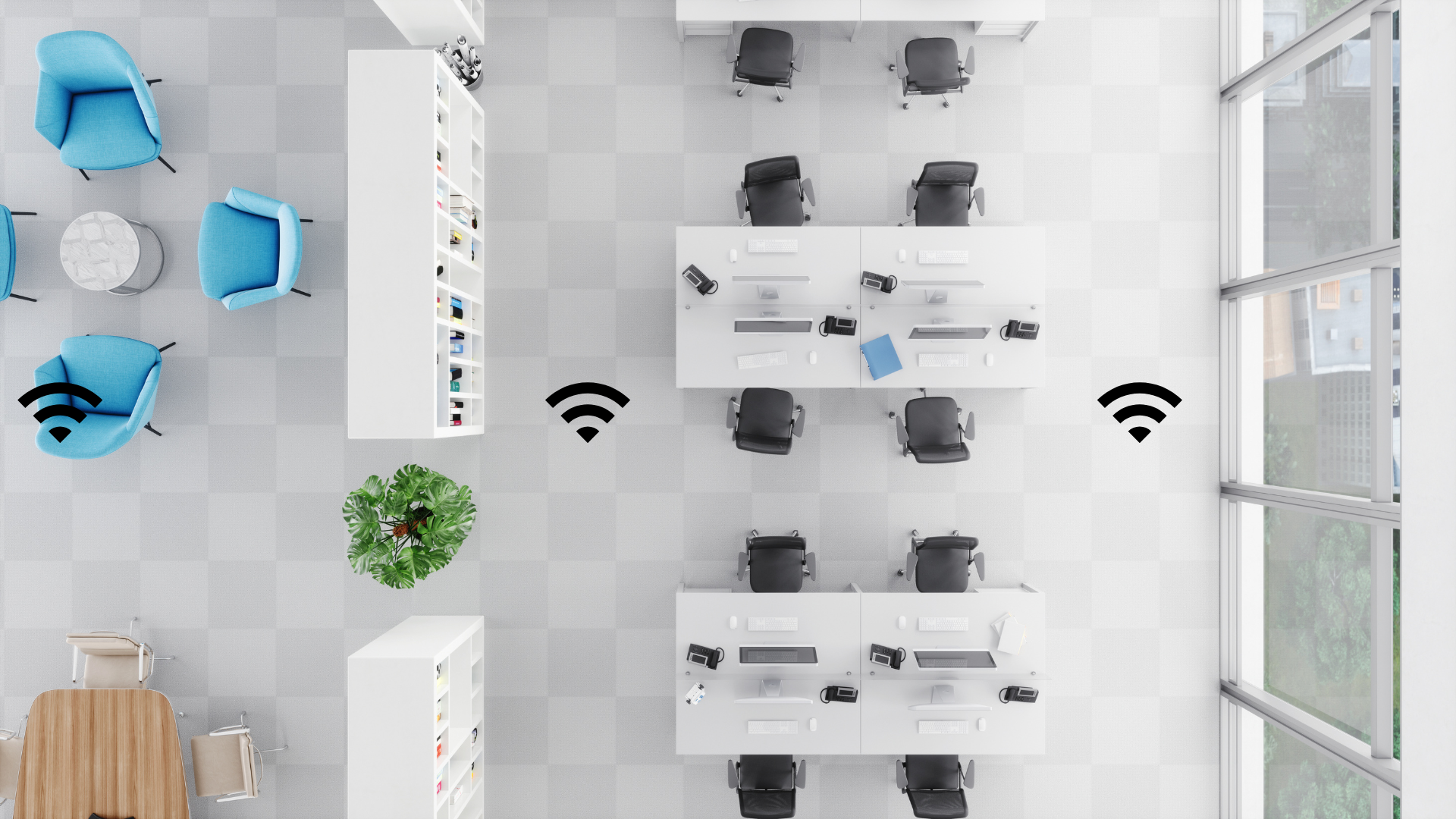5 Reasons Why Your Office Wi-Fi Is Slow (and How to Fix It)
Slow internet can be a significant roadblock to productivity in today's business world. Despite investments in Wi-Fi equipment, many offices struggle with poor connectivity, leaving employees tethered to their desks instead of working where they're most effective.
Did you know that 39% of employees find their home internet connection faster than their office? With each employee losing 54 minutes of work per week due to connectivity issues, the impact on productivity is significant.
In this article, we'll identify the five common reasons behind slow internet at the office and provide practical solutions to fix them.
5 Common Reasons for Slow Wi-Fi in The Office Space
1. Inadequate Network Management
Business networks are often more intricate than we realize. Unlike home networks, which are plug-and-play, managing a business network is dynamic and ongoing. Adding or removing a device or technology within your network ecosystem can significantly impact performance.
Maintaining optimal network performance has become an ongoing challenge due to the increasing complexities of modern business operations, from security demands to compliance standards and evolving work processes. Real-time monitoring and continuous maintenance are required to keep pace with this ever-changing landscape.
Fortunately, addressing the issue of insufficient network management is relatively straightforward. Implementing a robust network management solution is key. Whether you opt for commercial or open-source solutions depends on your in-house expertise and business needs. Additionally, integrating network management best practices can further enhance performance and reliability.
But before you get to network management, it is essential to understand your network performance. What are the benchmarks? What are the network performance expectations, and what are you actually getting? You can use network performance metrics such as bandwidth, throughput, latency, and more to identify gaps. Armed with this information, you can set the right expectations and work towards achieving optimal network performance.
2. Poor Network Design or Configuration
The efficiency of a network depends on various factors, with network design, components, configurations, and security settings topping the list. During the network design phase, you should pay attention to sizing, floor plan analysis, selection of network topology, and the physical infrastructure, including cabling and hardware like access points (APs).
Even with multiple access points, Wi-Fi dead spots are common because of obstructions such as walls, beams, cupboards, or partitions can hamper the proper functioning of Wi-Fi networks. Office spaces require multiple access points that are strategically located based on a careful study of the floor plan.
Configuring access points to operate on different channels is essential to mitigate co-channel interference, which can significantly degrade Wi-Fi performance. Effective utilization of dual bands—2.4 GHz and 5 GHz—may be another challenge for businesses. For optimal results, it is recommended that the 5 GHz band be segregated for high-bandwidth applications like video conferencing and VR while the 2.4 GHz band is allocated for mobile devices.
You can also put specific devices, such as IoT devices, on a separate service set identifier (SSID) or virtual LAN (VLAN) to ensure they receive adequate bandwidth and not suffer network congestion.
3. Poor Installation
Poor installation is yet another common cause of sluggish Wi-Fi and subpar connectivity. Improper installation can severely hinder performance even with a well-designed and configured network.
There is more to it than simply hanging the access points to walls and stashing them within equipment racks. The effectiveness of installation varies depending on the access point you choose - whether with external directional antennas or internal omnidirectional antennas. Omnidirectional antennas provide a 360° donut-shaped radiation pattern to provide the widest possible signal coverage in indoor and outdoor wireless applications. On the other hand, directional antennas are primarily used for point-to-point communications, including long-range connectivity applications between two facilities or devices.
Factors such as mounting height and antenna orientation significantly influence coverage and connectivity. Ceiling-mounted installation typically yields the best results, with access points ideally positioned no more than 10 feet above the floor. However, it's best to let your internet service provider (ISP) handle access point placement and mounting nuances. Investing in professional installation ensures optimal equipment performance and superior connectivity experience.
4. Bottleneck on the Wired Network
Contrary to popular belief, a wireless network doesn't mean wires are entirely eliminated. A lack of cabling can affect Wi-Fi performance. Insufficient bandwidth supplied to access points via cables can impair their ability to deliver optimal performance.
Connecting stationary network devices like printers and network storage units with Ethernet cables helps alleviate bandwidth congestion, ensuring smoother performance for wireless-reliant devices such as laptops and smartphones. Additionally, the wired network connecting access points may need to help accommodate the required capacity. Hence, a robust underlying cabling infrastructure is paramount for maintaining a healthy and high-performance Wi-Fi network.
5. Increased Demands on Your Technology Infrastructure
When was the last time you upgraded your network equipment? Consider what has changed since then. Chances are, you've added more devices to your network, each faster than its predecessors. Moreover, you may have introduced new technologies like video conferencing systems and many software applications that contribute to a more efficient workflow. Additionally, your data transfer needs have likely escalated, with larger files uploaded and downloaded to your servers.
To meet these escalating demands, your network infrastructure must evolve with the latest technology. While Wi-Fi offers convenience, Ethernet networks typically outperform Wi-Fi in handling bandwidth-intensive tasks. Consequently, many organizations prioritize wired networks for activities requiring robust performance. The inability to utilize certain technologies over Wi-Fi can hinder flexibility, ultimately impacting productivity.
Is Your Team Suffering from Slow Wi-Fi and Poor Connectivity?
Unlike home Wi-Fi equipment, Wi-Fi at the workplace is never plug-and-play. It requires concerted efforts, real-time monitoring, and constant maintenance to work properly. With the right tools, processes, and expertise, Wi-Fi will work seamlessly, enabling everyone on your team to productively use digital tools and resources.
Is your network performing at optimal levels? Are your end-users getting the best network performance? Do you have complete visibility over your entire network infrastructure?
A robust Wi-Fi network is made up of multiple components - it involves having the proper hardware, the right internet service provider and the correct placements of access points in your office space. If your workplace is plagued by frequent 'page cannot be displayed' errors, constant Microsoft Teams reconnects, your 15-minute meetings turning into an hour, or your team members tethered to Ethernet cables, it's a clear sign that your Wi-Fi network needs professional attention.
At Cabco, we offer complimentary Wi-Fi site Surveys that assess your premises' entire network infrastructure. This helps identify coverage gaps, interference sources, and optimal access point placement and helps better plan your infrastructure's design. It also saves you money as you more efficiently distribute your access points. Reach out to us to learn more.
Ahona Saha
Marketing Coordinator
Cabco




